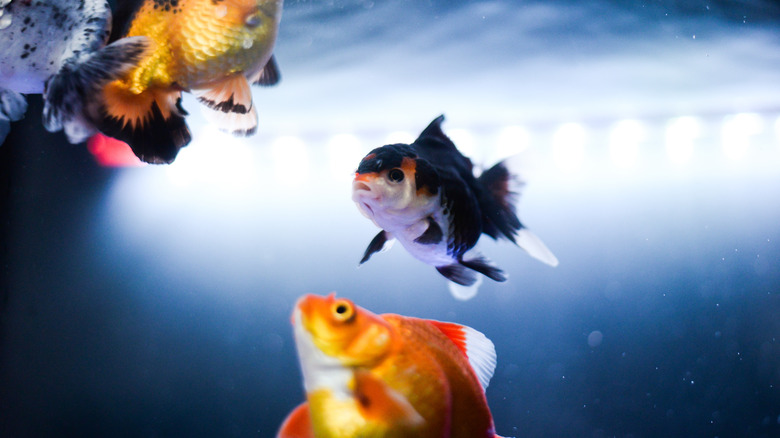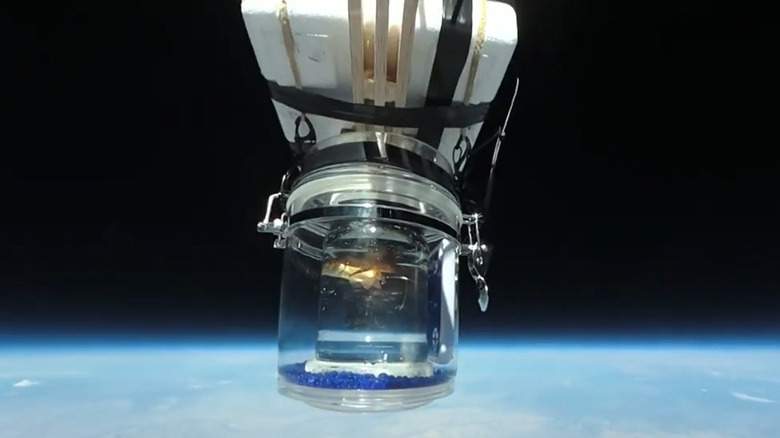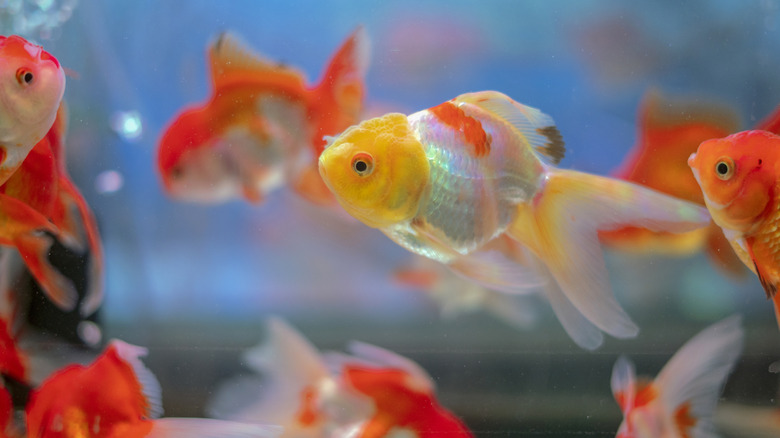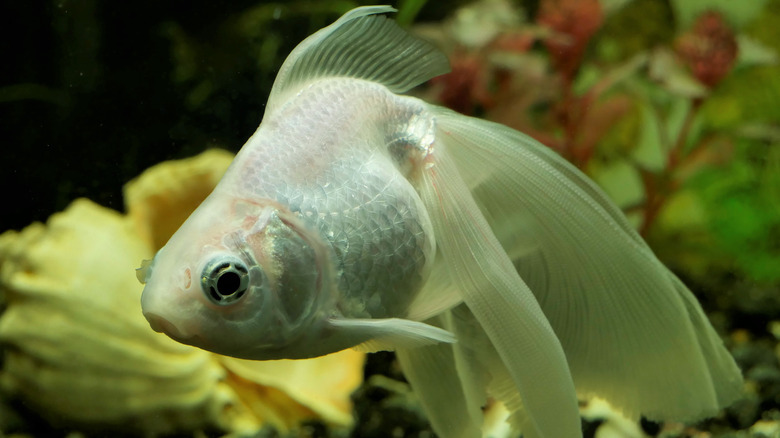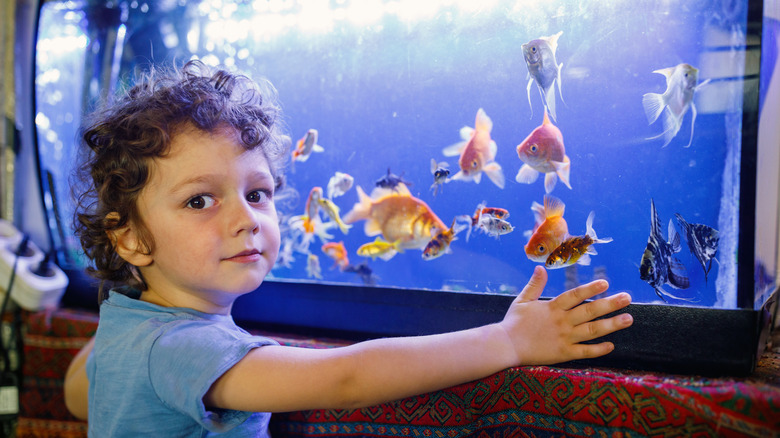Myths About Goldfish That Have Been Firmly Debunked
From their supposed three-second memories to their tiny bowls, myths about goldfish are everywhere. However, did you know that goldfish can learn tricks, navigate mazes, and even recognize their owners? These fascinating creatures have been misunderstood for far too long, and it's time to set the record straight.
The story of goldfish as pets spans over a thousand years, beginning in ancient China during the Tang dynasty. Initially bred from carp, their golden hues became symbols of luck and fortune. By the 17th century, goldfish had spread to Europe, where they were seen as a status symbol among the wealthy. In the late 1800s, the United States popularized them further through a government initiative that distributed thousands of goldfish in small bowls to residents of Washington, D.C. This campaign inadvertently reinforced misconceptions about their care, many of which persist today.
Let's debunk some of the most pervasive myths about these beautiful fish and uncover the surprising truths about their intelligence, growth, lifespan, and goldfish care. Whether you're a longtime fish enthusiast or simply curious about these aquatic companions, you're about to discover why goldfish deserve far more credit than they often receive.
Goldfish memory and learning will surprise you
Goldfish have long been dismissed as forgetful creatures with a so-called three-second memory, but this couldn't be further from the truth. Scientific studies have consistently shown that goldfish possess remarkable cognitive abilities, such as a 2017 study revealing similarities between them and mammalian brains when it comes to spatial memory formation. In fact, they can remember information for a whopping six months and learn complex behaviors, proving their intelligence is far beyond what most people imagine.
In laboratory experiments, goldfish have demonstrated the ability to navigate mazes, recognize patterns, and associate specific stimuli with rewards. For example, researchers have successfully trained goldfish to respond to colored lights, navigate through hoops, and even pull levers for food rewards. These feats highlight their capacity for memory retention and problem-solving. Moreover, they are capable of recognizing human faces, have gone to outer space, and have even learned to drive a car.
The origins of the three-second memory myth are unclear but may have (at least in part) stemmed from attempts to justify inadequate care, such as keeping goldfish in small, unstimulating environments. In reality, as we are coming to realize, goldfish thrive in enriched settings that allow them to explore and interact with their surroundings, stimulating their natural intelligence.
The truth about goldfish size and growth
One of the most persistent myths about goldfish is that they only grow to the size of their tank. While there's a grain of truth in this belief, it's rooted in a misunderstanding. The origins of this myth may lie in observations of stunted goldfish in poorly maintained tanks, mistakenly attributed to a natural adaptation rather than an environmental limitation. It may also be due to the well-intentioned but likely misconstrued efforts of the United States Commission on Fisheries. They started a breeding program after receiving goldfish from Japan in 1878, whereupon they started sending the goldfish in bowls to Washington, D.C., residents — an environment the fish couldn't grow well in.
Goldfish are indeterminate growers, meaning they continue to grow throughout their lives. However, their growth can be stunted due to more than just small tanks, including poor water quality, stress, and inadequate care. When properly cared for in spacious, well-maintained tanks, goldfish can grow up to 14 inches in length or more. Fancy goldfish varieties may not grow as large as their common counterparts, but they, too, require ample space and high-quality water conditions to thrive.
Debunking goldfish environmental needs
The image of a goldfish swimming in a tiny glass bowl is iconic — but it's also entirely unsuitable for their health and well-being. Goldfish tanks need space, good filtration, and stable water conditions to thrive. While goldfish are hardy creatures, even they can't survive for long in such inadequate environments.
Goldfish produce a significant amount of waste, which can quickly lead to ammonia buildup in small, unfiltered bowls. This toxic environment can cause stress, illness, and premature death. In contrast, a properly sized tank with a robust filtration system for your goldfish helps maintain water quality, allowing them to exhibit natural behaviors, such as swimming and exploring. While goldfish have evolved a rare adaptation that allows them to survive without oxygen for up to five months, they need oxygen-rich water in order to truly thrive, too.
The goldfish bowl myth likely gained popularity due to its convenience and the perception that goldfish are low-maintenance pets. In reality, they require substantial care, including a spacious tank of at least 20 gallons. Providing the right environment isn't just about meeting basic needs — it's about giving goldfish the chance to do well. Proper care ensures not only their survival but also their happiness and longevity.
Goldfish live longer than you think
Another widespread myth is that goldfish are short-lived pets, surviving only a few years at most. The short-lifespan myth may also stem from cultural perceptions of goldfish as "disposable" pets, a notion that has persisted since their rise in popularity during the 19th century. Like many of the other myths about goldfish, this misconception stems from inadequate care. When goldfish are given the proper environment and attention, they can live for decades. In fact, the oldest recorded goldfish, Tish, lived to an impressive 43 years — living so long that her scales turned silver!
In unsuitable conditions, such as small, unfiltered bowls, poor water quality can drastically shorten a goldfish's lifespan. Ammonia buildup, stress, and disease are common culprits in early deaths. However, in well-maintained tanks or outdoor ponds, goldfish routinely live 10 to 15 years, and some even surpass 30. Essentially, with good care, your goldfish can outlive your dog or cat!
Helping your goldfish live a happy life
Driving cars, mastering mazes, venturing into space and back — goldfish are far more than the forgetful, disposable pets they're often perceived to be. As we've uncovered, these fascinating creatures are intelligent, capable of learning tricks, and can live for decades when properly cared for. However, myths about their memory, growth, and care have led to countless misunderstandings that, sadly have led to poor living conditions for many goldfish.
To help your goldfish thrive, it's essential to dispel these misconceptions with informed care practices. Provide a spacious tank, include a high-quality filtration system, and perform regular water changes to cultivate a healthy environment. Keep their minds active with enrichment like obstacles or objects they can explore, and don't underestimate their ability to bond with their surroundings — and you.
Goldfish have been treasured pets for centuries, and understanding the truth about their needs is the first step to ensuring they live long and fulfilling lives. In fact, doing so may help you spot the signs that your goldfish is happy. Debunking the myths about goldfish can give these aquatic companions the care they truly deserve.
